Monastery of Our Lady of Ayia Napa. Ayia napa monastery, cyprus.
- small, which is located in the eastern part of Cyprus. Now the city has ceased to be a place family vacation and is more famous for its parties, however, there are many cultural and spiritual must-see places, one of them is the monastery of Ayia Napa.
Monastery legendsOne of the most beautiful has been leading its history since about the 14th century. It was at that time, according to one of the legends, that the icon of the Most Holy Theotokos was found. The legend tells that in the forest a hunter was attracted by the persistent barking of his dog. Deciding to find out, the hunter went after the dog and noticed a bright light coming from small cave, looking into which he discovered the icon. Most likely, the icon was hidden here in the 7th-8th centuries, when there was a period of persecution of Christians and their shrines were destroyed. Soon a church was built on the site of the cave, which then grew to a monastery. The monastery got its name from the icon - Ayia Napa means "holy forest".
According to another legend, the monastery was formed thanks to the rich family of a girl who was not allowed by her parents to marry an ignoble young man. Having grieved, the girl retired to the church, where she lived until the end of her days. Parents at their own expense built new premises, fountains and a gazebo in which the girl bequeathed herself to be buried. Whether the girl was actually buried there or not is not known for certain, but this beautiful legend takes place. On the opposite side of the Ayia Napa monastery, by the pond, according to legend, the founder of the monastery planted a tree - this sprawling samurai still meets everyone who wants to visit this shrine.
From the history of the monasteryThe monastery is interesting because during its existence it has not undergone destruction and reconstruction, and now tourists can admire it in its original form.
The monastery of Ayia Napa during its time was either male or female, and in the 16th century it became Orthodox from Catholic. Monastery for men last time was around the 18th century, then for unknown reasons the monks left it. According to one version, this happened due to the sudden settlement of the place by Greek families who fled from their cities from the plague.
In the middle of the 20th century, restoration was carried out in the monastery, thanks to which the monastery is now a place for meetings for representatives of different faiths. Also, after the restoration, the monastery acquired the status of a museum open to the public. Besides, in Lately festivals are held here, and on the initiative of the archbishop, the monastery has the status World Center Christian conferences and the center of the Cultural Academy of St. Epiphany.
Surroundings of the monastery
Not far from the monastery of Ayia Napa, to the west, there is a hill. According to legend, the Mother of God once rested on it. A small chapel was built on this site, furnished with icons depicting Christ, the Virgin and other saints, where those who wish can spend time in prayer.
Monastery nowIn the 90s of the 20th century, a new church was built in the immediate vicinity of the monastery, named after the Mother of God, the Virgin Mary. Believers and simple couples come here to pray for the continuation of the family, because, according to legend, those who gird themselves with a miraculous belt will definitely solve the problems of childlessness and sincere desires will come true.
How to get there?It is better to get to the monastery on foot or by car according to the coordinates. Be prepared that there may be difficulties with parking, as the monastery does not provide it.
 |
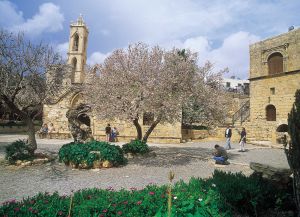 |
 |
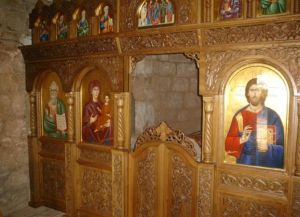 |
In Cyprus, the most famous is the church of Ayia Napa (Holy Napa). The meaning of the word "napa" in the literal translation from the ancient Greek language is "forest". It is with him, according to one of the legends, that the appearance of the icon of the Virgin Mary is connected, which later began to bear the name of Ayia Napa.
On site former cave in the forest where the icon of the Virgin Mary (Ayia Napa) was found, in the 14th century a small church of the same name was built, and later a cathedral, which over time practically did not lose its original appearance.
Here, in the middle of the 18th century, the first refugees from Greece fled from the plague. Since that time, a new settlement appeared on the map of Cyprus, bearing the name of the holy icon, known today as the resort city of Ayia Napa.
In 1500, the cells of the monastery, the church building and the mill were built, and later the monastery of Ayai Napa and the chapel were built. In the center of the monastery there is a fountain, and behind the fountain there is a residential two-story building. After restoration in 1950, the monastery building began to serve as a venue for various church meetings and events. Today, there is a museum in the monastery, and events are held on the sites.
Where is
The monastery is located in the heart of Ayia Napa, at a distance of 1 km from the coast. The car will have to be parked on a nearby street. The city is easily accessible by following the signs. Time out will take about an hour and a half.
Church of the Prophet Elijah in Protaras
If you are in Protaras, be sure to visit the Church of the Prophet Elijah, which is located on a hill at an altitude of 115 m above sea level.
The temple got its name in memory of the Old Testament prophet Elijah, who is highly revered among the Orthodox of Cyprus. Every year in honor of St. Elijah, divine services are held in the church and sometimes fairs are organized.
The architecture of the temple is similar to many others. The interior walls and vaults are decorated with frescoes and painted plates. Many steps lead to the foot of the temple. According to legend, if you count the number of steps during the ascent and descent, and it will be the same, then this means that all sins are forgiven, and a person begins life from a clean slate, sinless.
Where is
The Church of the Prophet Elijah can be found in Protaras, on Prophet Elia Street, 6 km southeast of the center, at the foot of the mountain. When walking around the city, focus on McDonald's.
Church of St. Nicholas the Wonderworker in Protaras
The temple was built in 2007 by local residents, fishermen and an organization of sailors in honor of Nicholas the Wonderworker, who patronizes travelers and everyone who sets sail.
So, during one of sea voyages from Myra to Alexandria, he managed to tame the raging elements of the sea and resurrect a dead sailor who fell off the mast.
The architecture of the temple is typical of Greek churches. It is small but very cozy inside. The windows and dome of the church are the color of the sea, a bell hangs over the entrance to the altar. Since the cathedral is located on a ledge in the sea and is visible from afar, it is a beacon for fishermen and ships.
Where is
The church is located on the coast Hotel Golden Coast next to the fishing harbor on the pier. On Sundays and major holidays, services are held in the Church of St. Nicholas the Wonderworker in Protaras, including in Russian.
You can get to the temple by buses No. 101 from Ayia Napa and No. 102 from Paralimni, stop Vrisoudion 1 (Vrisudion 1).
Church of Saint Epiphanius in Cyprus
The old temple was built and consecrated in honor of the Archbishop of Cyprus, Epiphanius of Cyprus, known for his participation in the Second Ecumenical Council. The new church was rebuilt in 2006. Now it is a whole complex, which consists of the skete of St. Epiphanius, carved into a rock, small old church with a glass floor, a new elegant temple, which is often used for weddings and other celebrations.
Church of St. Epiphany is located 1.2 km east of the center of Ayia Napa.
The Cathedral in honor of the Holy Great Martyr George the Victorious is located in the center of the city of Paralimni, north of the old church of St. George the Victorious on Agios Georgios Street.
The laying of the first stone in the foundation of the temple took place in 1963, and by 1966 the temple building was completely rebuilt.
Excellent modern resort Ayia Napa attracts tens of thousands of tourists from all over the world. most popular place recreation is perfectly suitable for both young people and couples who want to spend their holidays with interest and benefit on one of the best beaches Cyprus. It is full of life day and night. Ayia Napa is an excellent place for entertainment and parties, there are a great many discos, restaurants and bars offering guests all kinds of entertainment programs. It is not for nothing that the resort is often called the second Ibiza…
Status luxury resort also support unsurpassed sandy beaches, shallow and crystal clear sea, a huge water park located nearby.
Previously, the most famous party center of Cyprus was usually a fishing village. Many centuries ago, when there were still impenetrable forests on the site of the resort, one of the few residents found a cave in which there was an icon that was miraculously preserved. Mother of God. This was a good sign, foretelling people many positive changes in their lives. Since then, many began to build their houses there, and the area got its name Ayia Napa, which means “Sacred Forests” in translation.
Of course, the main advantage of the resort is first-class beaches with golden sands, but the many attractions of this area will not let the most inquisitive tourists get bored.
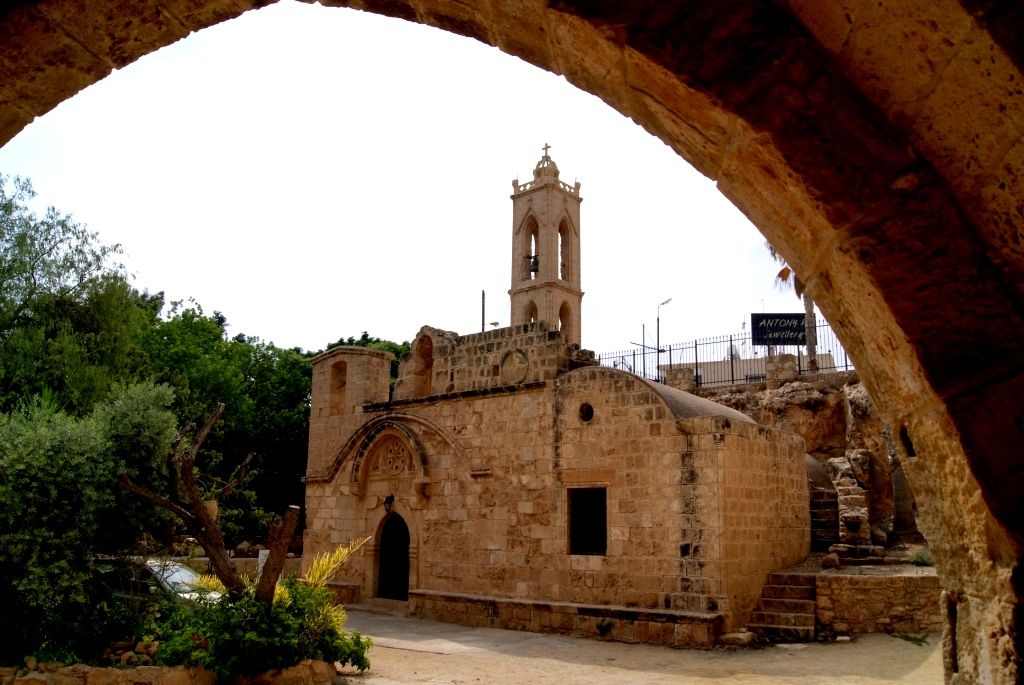
This Orthodox church is the only one in Cyprus. Its historical value is difficult to overestimate! Near the entrance to the church, a majestic sycamore tree has been growing for many centuries.
According to legend, it was planted more than 600 years ago by a girl who founded a monastery, within the walls of which the church is located. The girl's parents forbade her to marry her chosen one, and she ran away from marrying a rich old man and began to live in the place where the church is now located.
Address: Cyprus, Ayia Napa, Archiepieskopou Makariou III.
Telephone: +357 23 721 284; +357 23 721 288.
Working mode:
- V winter period: from 09:30 to 15:00,
- V summer time from 09:30 to 21:00
![]()
For lovers of colorful adventures, a farm specializing in donkey breeding is perfect. Tourists are extremely welcome here and for a small fee they will be shown the traditional conditions of life of local peasants, as well as a short 30-40 minute excursion riding on donkeys, which are given unusual names: Hitler, Pamela Anderson, Macedonian, Shrek and Rasputin.
An exciting route will be taken through olive and orange groves, and after it, tourists will traditionally be invited to taste hearty village food with excellent home-made wine.
Address: Cyprus, Ayia Napa, E143, Skarinou
Telephone: +357-99-620736
Working mode: Monday to Friday: 10.00-21.00, weekends: 11.00-17.00.
Price: about 1500 rub.
Ayia Napa Monastery
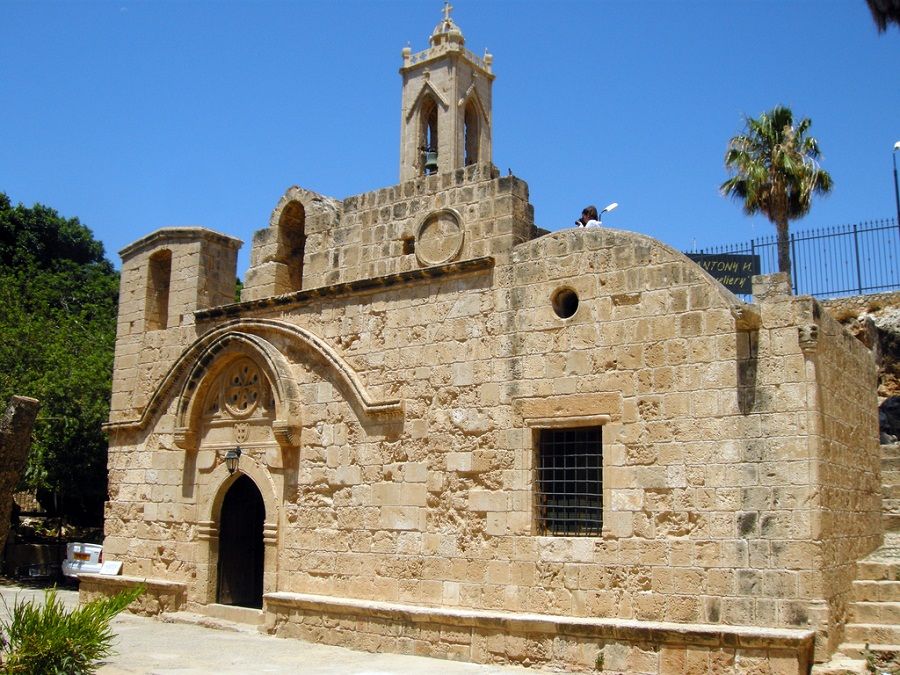
In the heart of the city is the magnificent monastery of Ayia Napa. The legend says that it was here that a cave was discovered many centuries ago, in which the icon of the Virgin Mary was kept. A small church was erected on that place, and already in the 16th century the walls of the monastery were erected, which later became the most significant on the island. After a while, he left several times and flourished again ... On this moment The monastery was opened for inquisitive tourists.
The “Fountain House”, made of marble, located on its territory, attracts everyone's attention.
There is also a chapel here, as well as a valuable Christian relic - a veil, which St. Veronica handed over to Jesus Christ going to Golgotha.
Address: Nissi Ave, Ayia Napa
Telephone: +357 23 722666
Working mode: for tourists open from 9:00 to 18:00
Price: for free.
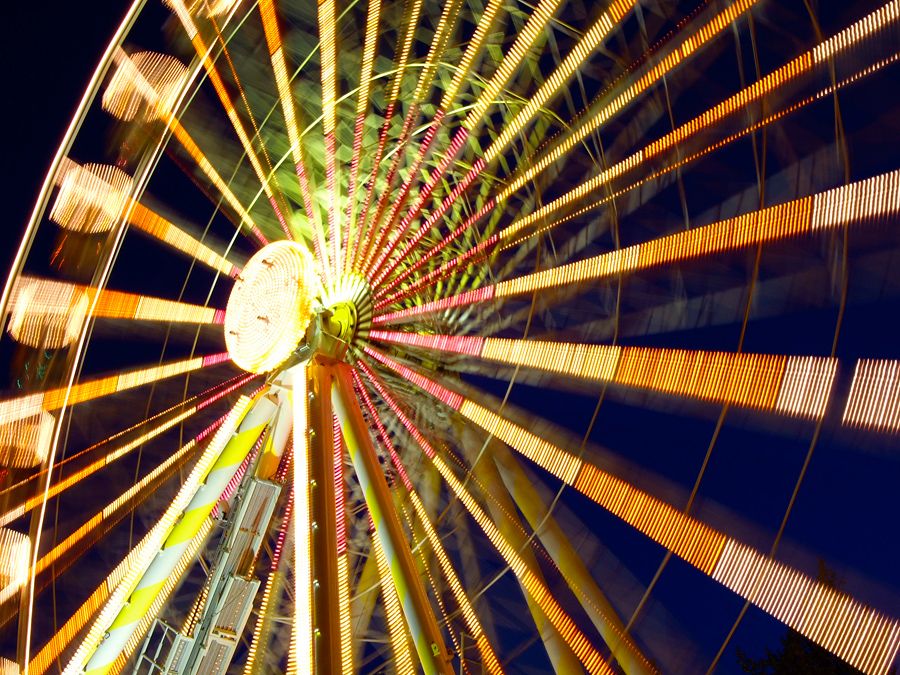
Living in Cyprus and not visiting the magnificent Luna Park, designed for both children and adults, would be a big mistake. For extreme lovers, there are many incomparable rides here that are simply breathtaking and make you forget about everything in the world.
There are also many exciting, funny and creepy attractions for those who just want to gain new experiences without risking their health.
Ferris wheel, swings, slides and much more just for you!
Address: Cyprus, Ayia Napa, Nissi (near McDonald's)
Working mode: from morning until late at night.
Price: one token per attraction costs 1 euro. 12 tokens can be purchased for 10 euros.
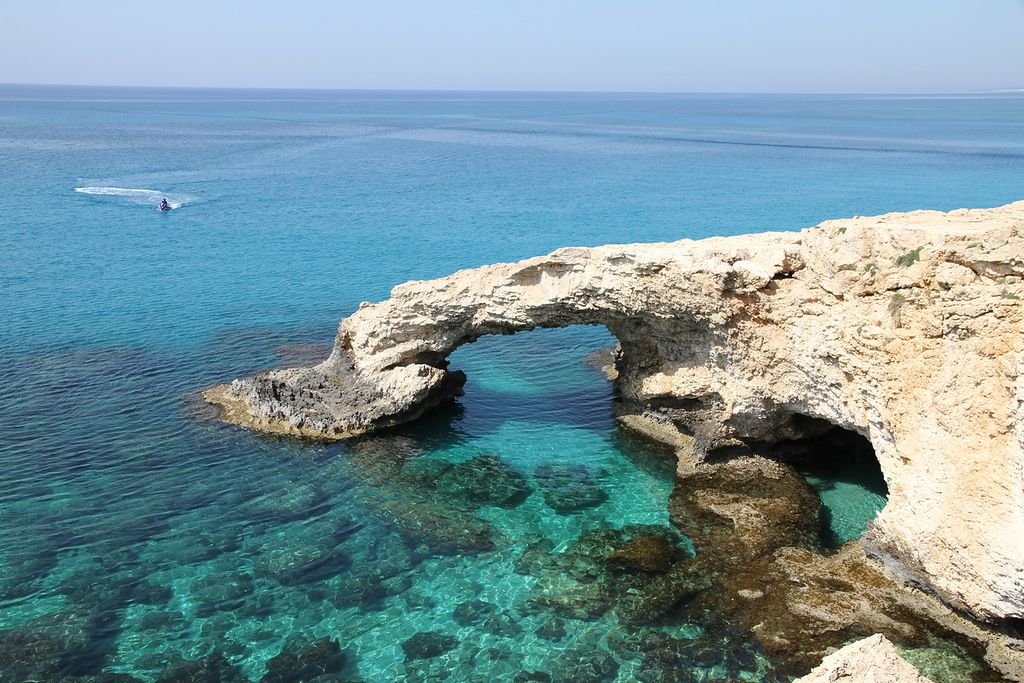
This natural attraction is very popular with all tourists without exception. Huge a stone bridge, going under the water, and pulls lovers to be photographed. From here a breathtaking view of the surroundings opens, it is especially good to consider the outlandish seascape. It is allowed to jump into the water from the bridge and swim freely.
There is a tradition in Cyprus: all newlyweds must come to the bridge of lovers and take pictures as a keepsake.
Address: Ayia Napa, Cyprus.
How to get there: You can walk, bike or drive from Ayia Napa, Paralimni and Protaras.
Price: for free.
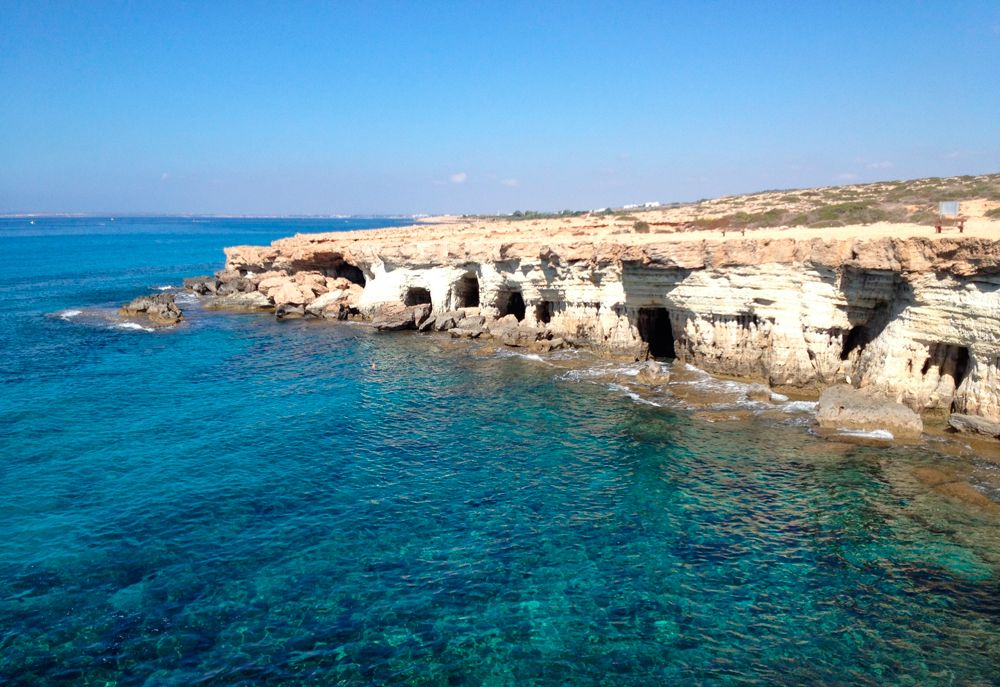
This amazing, unforgettable sight will not leave you indifferent. Grottoes and caves, which were formed as a result of the hard work of the sea surf and the action of air masses, can be found from Cape Greco to Famagusta. This rocky area is ideal for walking.
Many tourists prefer to swim up to the grottoes from the shore, while others admire the marvelous landscape from boats and yachts, and some of the most daring individuals even jump from steep cliffs into the water, despite the fact that dozens of information plates and stands warn about the danger of this activity. .
Address: neighborhood of Ayia Napa, Cyprus.
How to get there: on foot, by bike or by car from Ayia Napa or Paralimni.
Price: for free.
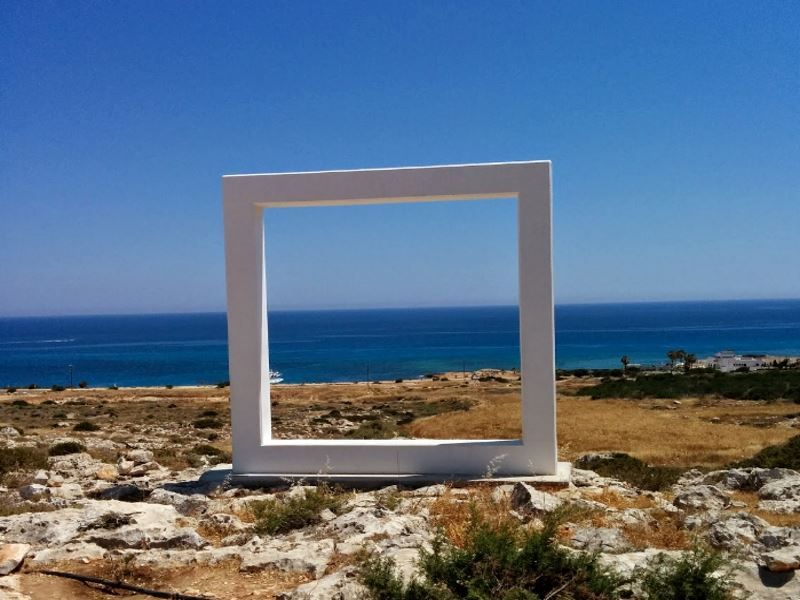
From the eastern part of Ayia Napa there is a grandiose Sculpture Park. Here you will not be able to admire unambiguous works of art, but if you dream up a little, you can imagine many interesting and extraordinary meanings, the meaning of which is hidden in ancient, antique statues, imbued with the spirit of antiquity.
Sculptures in the background seascape are very popular with tourists. There are many places to relax, there is where to hide from the sun, sit and even philosophize. Excellent place for hiking and privacy.
Address: East End Ayia Napa, Cyprus.
How to get there: by car or regular bus from Ayia Napa.
Price: for free.

Very beautiful cape near Ayia Napa, which attracts all travelers, hunters of extraordinary landscapes. Cavo Greco is also called the blue lagoon. Turquoise water really impresses all visitors!
The parking area, which is located just above the sea, offers an excellent view. There is also a small church, which, although not a monument of ancient architecture, but very harmoniously fits into the surrounding landscape.
Address: Ayia Napa, Cyprus.
How to get there: a road from Ayia Napa itself leads to this unusual lagoon. It is also easily accessible by car from Protaras.
Price: for free.
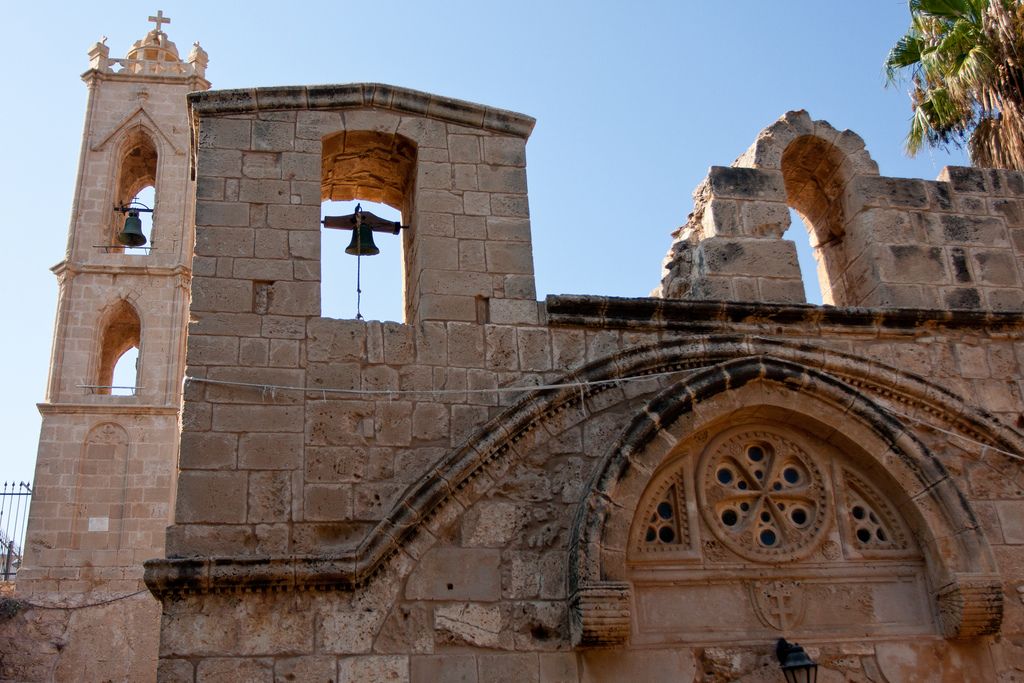
This monastery has survived to this day completely unchanged! Perestroika did not touch him, and he managed to survive even during the Ottoman rule. According to legend, its history begins with an amazing discovery by the locals of the icon of the Virgin Mary.
In one of the caves where the shrine was found, the original monastery was organized. Throughout the history of its existence, he often changed his "sex", becoming either female, then male, then again female. Since 1758, the monks abandoned the monastery for unknown reasons.
Today it acts as a museum, inviting tourists and guests of Ayia Napa to admire ancient architecture and the greatness of the culture of Cyprus.
Address A: located in the heart of the city.
Working mode: from 8:00 to 18:00.
Price: visiting the monastery is free.
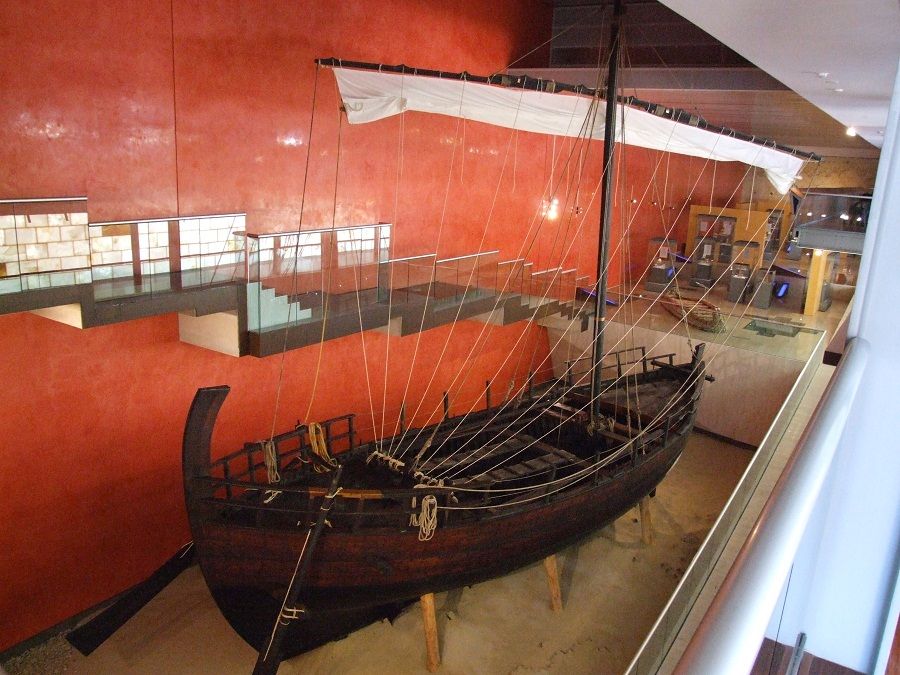
Museum "Talassa" is completely dedicated to the sea. It was founded back in 1984 and is still thriving. Thousands of tourists annually visit the expositions exhibited in the museum, admire the beauty of the gifts of nature, the priceless riches of the environment.
A huge part of the museum contains copies of the ruins of the ancient Greek ship "Kyrenia-Elefetria", which crashed near Cyprus. His remains were found in the 60s of the last century. The ship itself, raised and restored, is located in the Kerinian fortress.
The museum occupies three floors. In each of the halls there are innumerable exhibits that are worth seeing!
Address: Kryou Nerou, Ayia Napa, Cyprus.
Telephone: 23816366
Working mode:
- Summertime (June 1 to September 30): Monday: 09:00-13:00; 18:00-22:00. Tuesday-Saturday: 09:00-17:00. Sunday: 09:00-13:00.
- In winter: Monday: 09:00-13:00. Tuesday-Saturday: 09:00-17:00. Sunday is a day off.
Ticket price: 3 euros for adults, 1 euro for children.
Cyprus - magnificent island, attracting tourists from all over the world, and forcing many to return to this outlandish place again and again. Ayia Napa is the most popular youth resort, as well as an excellent place for family holidays. It has everything that tourists need - excellent, clear sea, excellent climate and a lot of entertainment for every taste and budget.
Monastery of Our Lady of Napa is located in the heart of one of the most popular resorts in Cyprus - in Ayia Napa, about a kilometer from the coast. The history of the monastery dates back to XIV century- the times of Byzantine rule in Cyprus. Two legends tell us about the history of its foundation. Let's get to know them.
The legend of finding the icon of the Virgin Mary
In those days, this area was covered with forest, in which it was even possible to hunt. One day, a hunting dog noticed an unusual light coming from the cave, and began to persistently attract its owner by barking. The hunter looked into the cave and found an icon of the Virgin Mary in it. Apparently, the icon was hidden there during the period of iconoclasm in the 7th or 8th century. Translated from old Greek, the word Napa means forest. Since the icon was found in the forest, she was given a name Our Lady of Napa (Holy Forest). Word Aya(Αγία) is translated from Greek as saint. Over time, the name of the icon was shortened and began to be called Ayia Napa.
A small church was first erected on the site of the cave in the 14th century, and a monastery was founded a little later.
It's time for the second legend.
The legend of the founding of the monastery of Ayia Napa
A girl from an aristocratic Venetian family could not convince her parents to allow her to marry a "commoner". Out of stubbornness, she decided to become a nun and took refuge in a cave already known to us. Later, with the money of the parents, a church, monastic cells and even a mill were built here. This happened around 1500. A little later, the monastery itself was founded and the Latin chapel was built. On the north side of the monastery courtyard there is a fountain in the shape of a wild boar's head. Immediately behind it is a two-story building in which the girl initially lived.
WITH opposite side In the monastery, a Venetian planted a tree that still grows on the bank of a pond with goldfish. ficus sycamore(Ficus sycómorus) is the scientific name for it. VenetianLena and Sycamore- this is the name of the next photo.
Being already in old age, the Venetian ordered to build a gazebo with a fountain in the courtyard and asked her to bury her in it. Whether she rests there or not is not known for sure. But here the gazebo has been preserved in its original form.
History of the monastery
The history of the monastery of Ayia Napa is quite unique. If other monasteries in Cyprus were often rebuilt after destruction, then Ayia Napa has survived to this day without undergoing "restructuring". Even under Ottoman rule after 1571, it was not destroyed or converted to another faith ... or, conversely, it was. Oddly enough, but it was the Turks who contributed to the fact that the Catholic (at that time) monastery turned into an Orthodox one. The "gender" of the monastery changed several times from male to female and vice versa. The last time the monastery became again male in 1668, but after 90 years (in 1758) the monks left it for unknown reasons.
There is another fact in the history of these places. In the middle of the 18th century from Greek city Refugees arrived here in Thessaloniki. They ran away not from the invaders, but from the plague that broke out then in the city. They were the first settlers in the area of present-day Ayia Napa. The middle of the 18th century and 1758 are the same time for us. Is there a connection between these events? We do not know - let historians agonize over this issue. But it is reliably known that from that moment a new locality, which has turned into a resort city by now, and surrounded the monastery so much that you still have to look for the latter here.
In 1950 the monastery was restored. In subsequent years, it served as a venue for various church meetings and conferences. Currently operates in the status of a museum. But sometimes social events, such as festivals, are also held here.
And finally, the inspection of the monastery, let's look inside the church. You can find a photo session of the church in the photo album below, but for now we will show only a couple of photos.
Where did the Mother of God rest?
Let's start with a small lyrical digression. After visiting the monastery, we left its territory with north side and decided to wander around the neighborhood for a bit. Climbing up the road leading to the left and a little uphill from the exit, we decided to sit down on one of the benches that stood near the fence that separated the street from a small white building. At this time, an old woman in the robes of a nun walked past us, opened the gate, then the door to the building and went inside. We were interested, but where did she go? We decided to wait and not leave. After some time, the old woman left the building, closed the door behind her, went out the gate and went home.
We think you won't need thirty seconds to think about what we did next. Right! We opened the gate... approached the building... (looking around) opened the door... and...
You can see a photo report of what happened a little lower in our traditional photo album. In the meantime, let's say that our information (the official website of Ayia Napa) reports that this chapel was built on the very spot where the Virgin lay down during her rest. The date of the event is not specified in the source. Here's what it looks like from the outside.
Well, our tour is over for today. It remains only to tell how to get to the monastery Virgin of the Forest.
How to get there
Residents of Ayia Napa just need to walk a little away from the sea. The rest will have to go and then look for a place to stop. Let's say right away that there is no usual parking near the monastery, so you have to leave your car on one of neighboring streets. The main thing then to remember where left. We even took a picture of it, and at the same time the nearby establishments, so that when we return to the car, we remember where it was. In the photo album, these are just introductory photos.
We "hammered" the coordinates of the monastery into the navigator, and he honestly led us there, but in the end we had to circle around the target to find a free place on one of the streets.
How to get to Ayia Napa is not particularly necessary to tell. If you do not drive with your eyes closed, then you will not pass by.
In conclusion, let's see where the monastery is located on the maps.
Ayia Napa Monastery on the map of Cyprus. GPS coordinates of the monastery
34.989578 33.999288 - coordinates of the street near the monastery of Ayia Napa
Enlarge >>
JavaScript must be enabled in order for you to use Google Maps.
However, it seems JavaScript is either disabled or not supported by your browser.
To view Google Maps, enable JavaScript by changing your browser options, and then try again.
TOURIST ANSWERS:
Most of us think that Cyprus is an insanely boring place and Ayia Napa is just good white sandy beaches and a street of bars and discos for young people. Yes indeed, resort place Ayia Napa is no different great choice interesting places, so a particularly demanding tourist in this direction will probably be bored, but those who come here to relax on the beach to a greater extent will have something to do and see.
Which interesting places worth a visit in Ayia Napa.
- Embankment of Ayia Napa- This perfect place For evening walks. Ships stand at the pier, quietly swaying on the waves, and along the embankment itself there are a large number of restaurants where you can taste the most delicious fish meze. In the evening, crowds of tourists come here for dinner, as well as to see an insanely beautiful sunset.
Address: Ayia Napa, 1st October, Ayia Napa
Embankment of Ayia Napa.
- Cape Greco- very scenic and romantic place in Ayia Napa. Divers come here to dive, especially curious and courageous tourists swim. There is an old legend about this cape that a monster lives in the waters of Cape Greco, which is distinguished by a particularly good-natured character. But to this day no one has seen him.
Address: Ayia Napa, E307, Paralimni
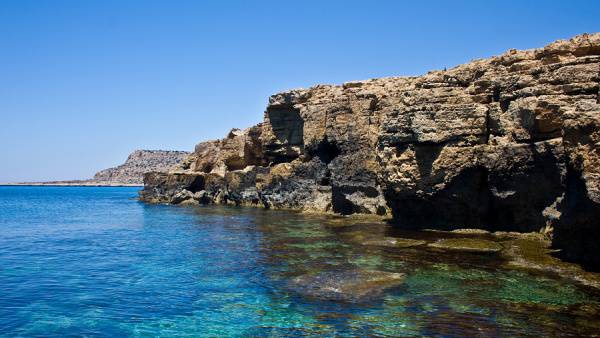
Cape Greco.
- Lunapark is an amusement park located directly in the center of Ayia Napa. On its territory are: waterslides, ferris wheel, swing-carousel, karting, roller coaster. But the highlight of this amusement park is the slingshot attraction, this is a kind of capsule designed for two, soaring up tens of meters. In the process, a video is being recorded, which the riders can buy as a keepsake and see their faces at the time of the flight. Entrance to the amusement park is free, only the ticket to the attraction is paid.
Address: Ayia Napa, Nissi, Ayia Napa

Lunapark in Ayia Napa.
- Aquapark "Water World"- overall a good place for both adults and children. There are no wild queues, as in most similar water parks. If we compare it with the water park in Limassol, then " water world"it will still be somewhat simpler. It does not a large number slides. Extreme, among which there is "Kamikaze", about 3 pieces, the rest are designed for children. Entrance ticket for an adult costs 35 euros, for children 20 euros. The water park is open daily from 10.00 to 18.00. You can get here by sitting on a free shuttle bus from the water park.
Address: Ayia Napa, 18, Ayia Thekla Road
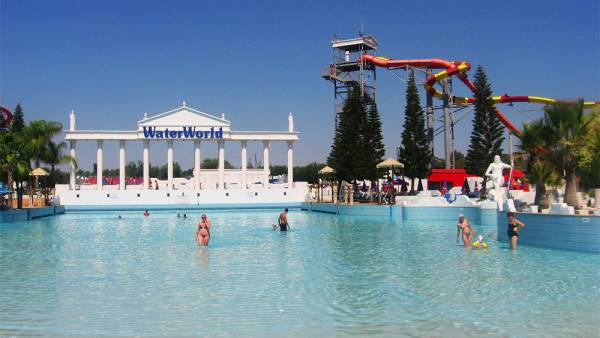
Aquapark "Water World".
- Church of the Virgin Mary is one of the rare historical sights in Ayia Napa. This Orthodox Church is valid. Many tourists pass it by and don't even notice it, because it is hidden behind a huge sycamore tree, which is about 600 years old.
Address: Ayia Napa, Archiepieskopou Makariou III
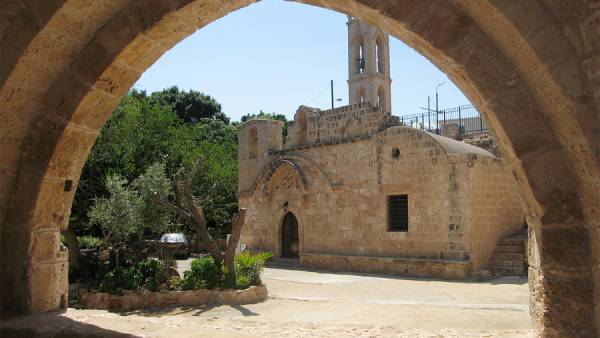
Church of the Virgin Mary.
- donkey farm- tourists with children most often come here, because children are crazy about these cute and vulnerable animals. On this farm, you can take a 45-minute ride on a donkey you like, and at the end, feed him a delicacy as a token of gratitude. Also, take memorable photos, both on your camera, and use the services of a professional photographer.
Address: Ayia Napa, E143, Skarinou
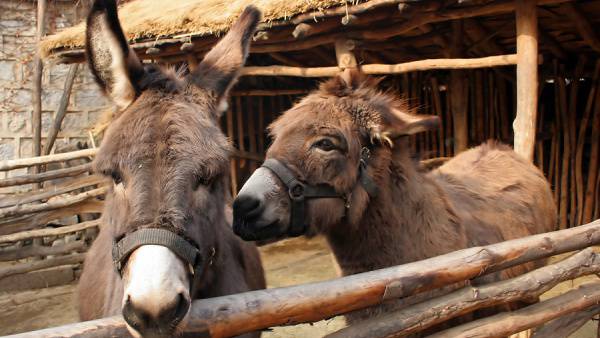
Donkey farm.
The town of Ayia Napa is located only 40 kilometers if you move east from largest airport island, called the "Cyprus Gate" in Larnaca. Ayia Napa was built as an amphitheater and descends from the hillside to a picturesque bay. This city has everything you need comfortable rest even the most demanding tourist.
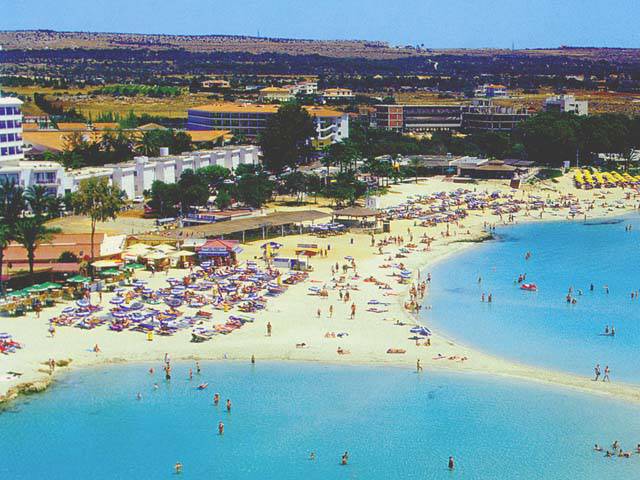
IN old times it was small fishing village, the only decoration of which was the most beautiful Venetian monastery. Late 20th century former village evolved into popular resort, annually hosting thousands of tourists from all over the world. "Napa" means "forest" in Greek. According to legend, an icon of the Mother of God was found in one of the local caves. Later, a noble Venetian, a resident of Famagusta, left her home and settled here. She built a monastery with a chapel and cells for the monks, a mill and an oil mill. Initially, nuns lived in this monastery, and the chapel was Roman Catholic. The domed octagonal pool in the center of the courtyard was decorated with stone bas-reliefs depicting a noble Venetian who founded the monastery, her father and mother, as well as a lion chasing a deer. In the middle of the 16th century, this monastery was turned into a Christian monastery, and at the end of the 18th century it was completely abandoned. Now the local church with a medieval monastery is perhaps the most interesting archaeological site in Ayia Napa for tourists to visit. At the east entrance, note the small theater with seating carved out of stone. And on south side In the monastery, a huge sycamore grows, the age of which, according to local residents, exceeds six centuries.
Next interesting object for visiting - Maritime Museum Ayia Napa. By the way, it is one of the first such museums in Cyprus. Numerous collections of mollusks living in the waters are exhibited here. free zones islands, as well as endemic bird species of the island.
The next point of sightseeing is small town Paralimni.

It is located on the shore of the lake, hence its name. IN last years here on the spot small village a major economic, demographic and tourist centre. A key site to visit is the three-aisled church dedicated to the Mother of God. Tourists are attracted here by the extraordinarily beautiful porcelain plates of the 18th century, which decorate the interior of the church. And in the part of the temple dating back to the 13th century, there is a small Byzantine museum.
It should be noted that throughout this area there are many similar churches worthy of your attention. So, in the village of Derinia there are three churches: the Church of St. George (17th century), St. Marina (15th century) and the Church of the Virgin with icons dating from the 17th century. In the village of Sotiras there is the Church of St. Mama, built in the 12th century and to this day partially preserved its appearance and decoration after reconstruction in the 14th century. Whoever visits it can say without a shadow of a doubt that he has touched Cypriot history. Worthy of attention and the Church of the Mother of God Hardakiotissa, located just one kilometer from the village of Sotiras, as well as the Church of St. George Hordakion (12th century).
The village of Frenaros is located in the center of the Kokkinochoria region. It became famous far beyond the borders of Cyprus for its traditional folk architecture. In the village there are small Byzantine churches of St. Andronicus and Archangel Michael from the 12th century. The church of St. Marina (15th century) is also interesting for its decoration.
The village of Liopetri is located 15 kilometers northwest of Ayia Napa. This village became famous for its skillful craftsmen weaving baskets. The secrets of their craft are passed down from generation to generation in the strictest confidence. There are also medieval churches in Liopetri. For example, the Church of the Virgin of Tenderness (16th century), the chapel of St. Andronicus (15th century), decorated with an octagonal dome and, unfortunately, poorly preserved frescoes. Not far from the center of the village is the bastion of Liopetri, where in the middle of the 20th century, after a battle with British troops, four heroes of the national liberation movement of Cyprus (1955-1959) were killed. Now this object is considered one of the memorable places protected by the state.
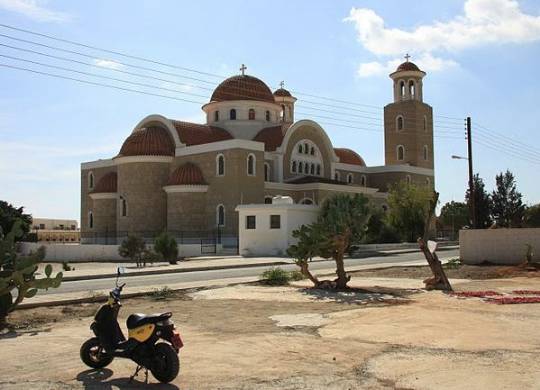
In the village of Avgorou, located 20 kilometers northwest of Ayia Napa, you can see not only interesting medieval, but also modern churches. In the west of the village is the cruciform, decorated with a large dome, the church of St. George Teratsioti (16th century). A little further north, near old road Nicosia - Famagusta is the monastery of St. Kendey, listed in many guidebooks for Cyprus, as a must-see for tourists. The church of this monastery, decorated with a dome, was built in the 15th-16th centuries.
Moving further north, you will find yourself in a "city buried in sand." So translated from Greek is called Famagusta. This city is known for its beaches, which are considered among the best in the region. mediterranean sea. Modern name this settlement received in the 10th century. And during the years of French rule (1191-1571) Famagusta became one of the most famous and wealthy cities in the world. It was then that high walls were built around the city, which today are included in the list of attractions of this settlement. They have survived to this day and now separate the Old and New town. Thanks to convenient port, fertile lands and the presence of water, which was pumped with the help of air mills, the village quickly turned into one of the most major cities Cyprus. Today Famagusta is known as the "City of Mills" or "City of Oranges" (the whole area abounds in orange plantations).
Visit in Famagusta the temple of St. Nicholas, which is an example gothic architecture. It was built by the Lusinians at the same time as the Hagia Sophia in Nicosia and the Bella Pais Monastery. Now this temple is the Turkish mosque of Lala Mustafa. Opposite the temple are the ruins of the palace of the Lusinian kings. According to legend, there were as many churches in Famagusta throughout its history as there are days in a year.




